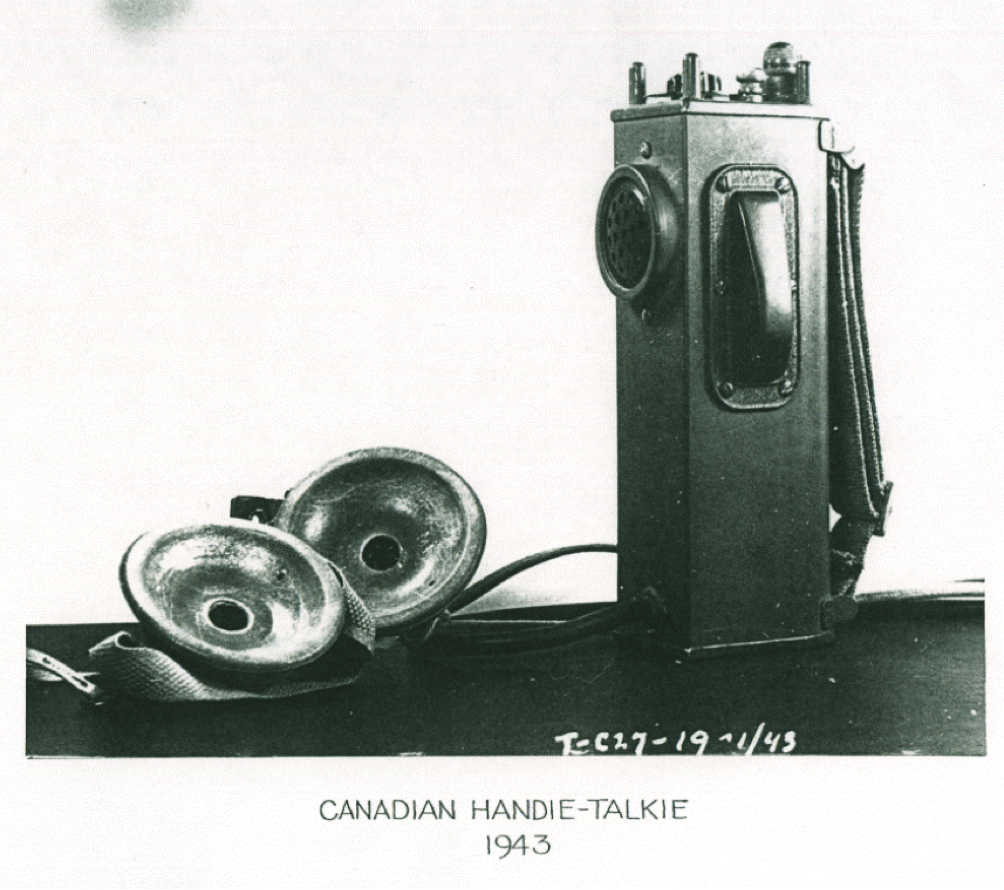Inventing the Walkie Talkie
Donald Hings - Inventor Extraordinaire!
Rossland has seen its fair share of local celebrities. From Olaus Jeldness to Nancy Greene & Kerrin Lee Gartner. Aside from gold and snow, what else is Rossland famous for?
Our inquisitive minds and resident tinkerers would be pleased to learn that the first version of what we now know as the “walkie talkie” was developed by one of our own: Donald Lewes Hings , P.Eng, M.B.E., C.M..
Donald Lewes Hings was born November 6th, 1907 in Leicester, England. As a child, Donald immigrated to the West Coast of Canada, arriving in North Vancouver and then moving to Lethbridge. A land inheritance brought Donald and his mother to Rossland, where he spent much of his youth and adult years. Focussed on engineering and radio, he assisted in orchestrating the first amatueur “ham” radio in the West Kootenays.
Hings was a self-taught engineer with a compelling interest in research. After many years working at a plywood plant in Trail, BC, he worked for the Consolidated Mining & Smelting Company (CM&S). His skills came to light as both Hings and CM&S saw the need for some adapted communications for their aerial prospecting program in remote areas of the north. At the time, mobile radios were mounted on a vehicle and transmitted in morse code. A standard wireless telegraph was all that was in use. This was, in theory, problematic, for the code that users had to memorize would travel to homebase before being relayed to those on the ground - far too time consuming. Not to mention there was often circumstantial interference; a grand display of the Northern Lights could disrupt the channel for hours.
What was really needed was real-time, mobile communications that could transmit long distances and could connect bush pilots traveling in remote locations around the CM&S sites with prospectors on the land below and a homebase. Hings, upon request of CM&S, tucked himself away and created his first portable two-way air-to-ground radio that he named the Light Aircraft Emergency Set. This transceiver weighed 12 lbs and came equipped with a folding antenna and batteries! It connected a pilot and a homebase out of the CM&S plant, had a range of 210 kilometres and could receive and send signals while in motion. He called this the “packset” and it was in use by CM&S by 1937.
Initially, the attention he gained was solely from CM&S. HIngs’ invention was referred to as a two-way field radio, wireless set, or packset and was predominantly used by prospectors on the ground. He chose “packset” as a name to self-patent the product in 1939 in the US. In fact, while in Spokane and leaving the patent office, Mr. Hings stated, “I remember walking out of the patent office and there were kids waving newspapers and saying that [WWII] had been declared.” (Hings Vancouver Sun Article). After hearing of the war, Mr. Hings, who was known as a modest and benevolent man, gifted the Canadian Federal Government a much needed technology that proved to be an essential tool in the Great War.
The C-27 Handie-Talkie developed by Hings pictured here in January 1943. This is what most people think of as a walkietalkie.
This model had the receiver within the earphone so if the enemy were in close proximity they wouldn’t hear any transmissions and give away the operators position.
Hings’ contribution to the war effort was abundantly clear. His already superb communications technology was quickly improved with water-proofing, a speech scrambler, a noise filter, volume magnifier, and improved earphones; all of these qualities would prove to be invaluable on the battlefields of Europe. Hings was loaned out by CM&S as a civilian associate to work alongside the National Research Council in Ottawa from 1940 to 1945. He created many versions of his packset, with the most recognizable being the Model C-58 Packset. As quickly as possible, designs were sent to a Toronto refrigerator factory to produce 18,000 models for allied troops in Europe and the tropics over the course of the war. This Packset was dubbed the “Walkie Talkie” by a Toronto journalist after witnessing a demonstration by a soldier using it while both walking and talking. It could be mounted on tanks and other armed vehicles, used in cold and humid climates, eliminate noises from the chaotic settings, and was very light weight and durable. Working within the Signal Corps as a Colonel, he furthered developed his own invention as well as other wartime telecommunication projects.
Hings working on a prototype in 1942
After the war, Hings moved his family to Burnaby, BC, where he took to his own tinkering. Over his lifetime, he created over 50 patents working in association with the Electronic Laboratories of Canada. Between 1946 and 1985, he helped move along projects in aerial geophysics, at the Department of National Defense, the Noranda Mines, and BC Marine Plastic, and practiced environmental research and development on air pollution vectors. Although it is still technically debated who first invented the walkie talkie, Hings has received substantial recognition from the Empirical and Canadian Government. In 2006, Hings was recognized by the Telecommunications Hall of Fame; "His modifications of the two-way radio, a device of his own creation, which he evolved into the world's first functional and operational walkie-talkie, saved the lives of thousands of British, Canadian, and American troops during the Second World War and helped to usher modern telecommunications technologies into the military" -- David Colville, chair of the selection committee.
Click here for more information on Donald L. Hings. All photos sourced from this material.




